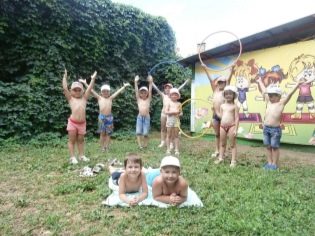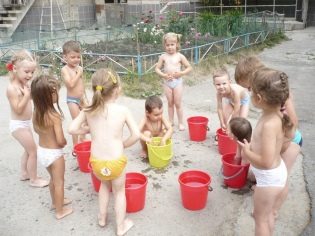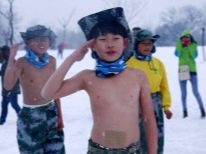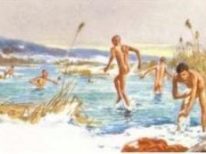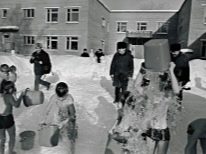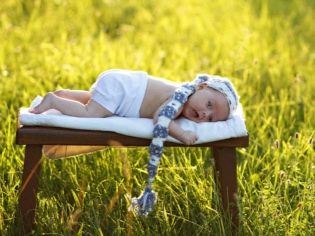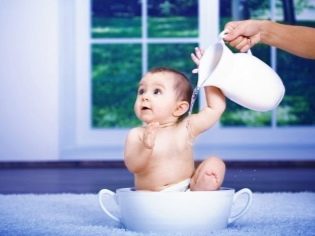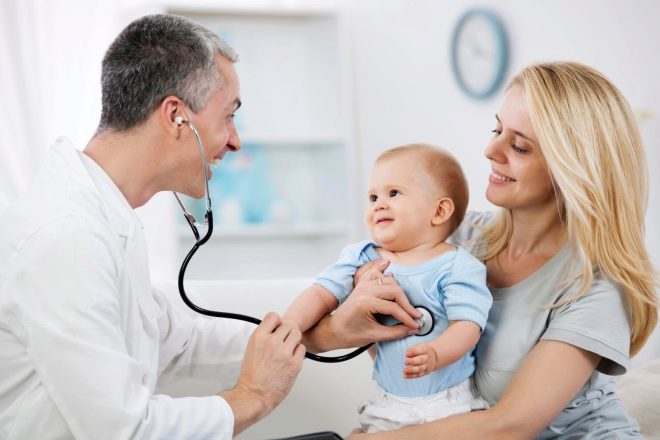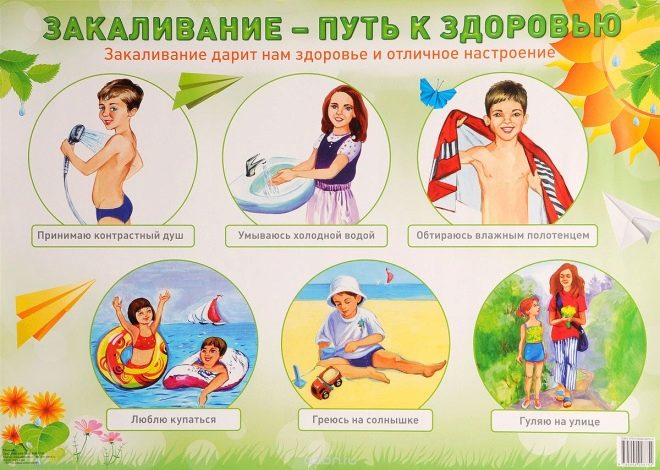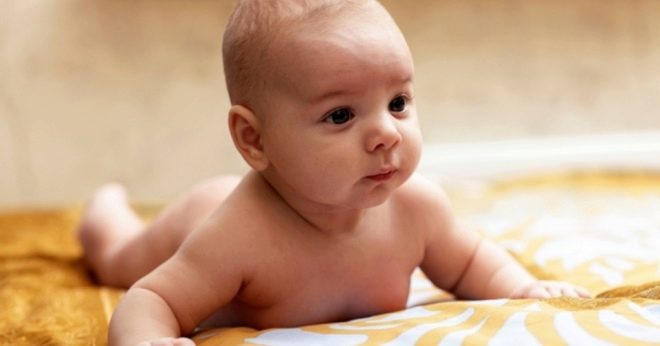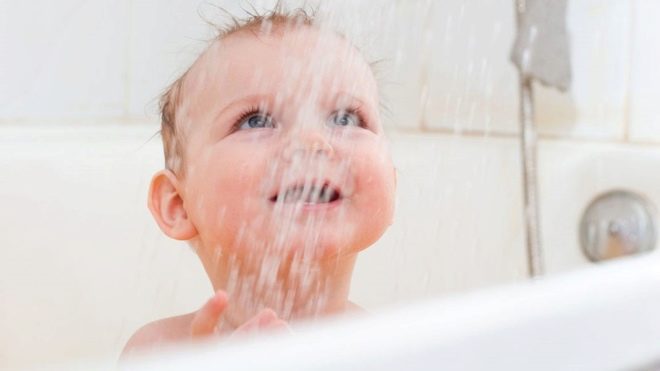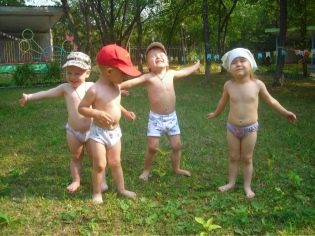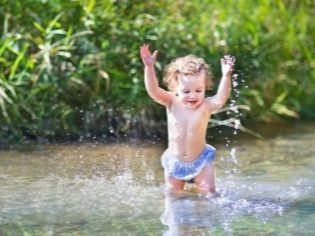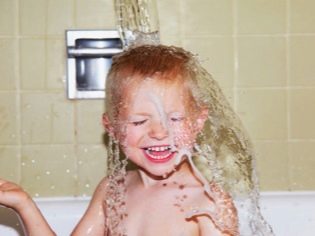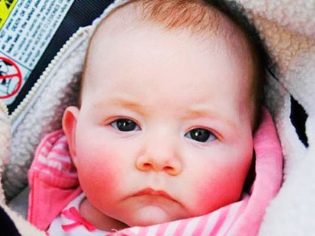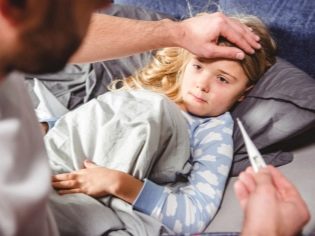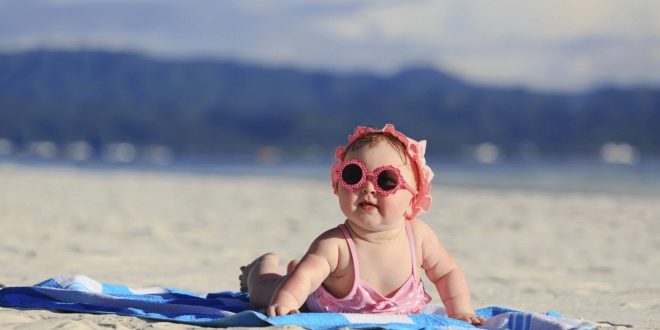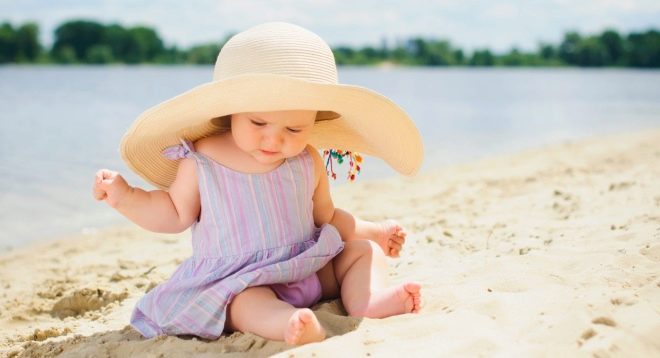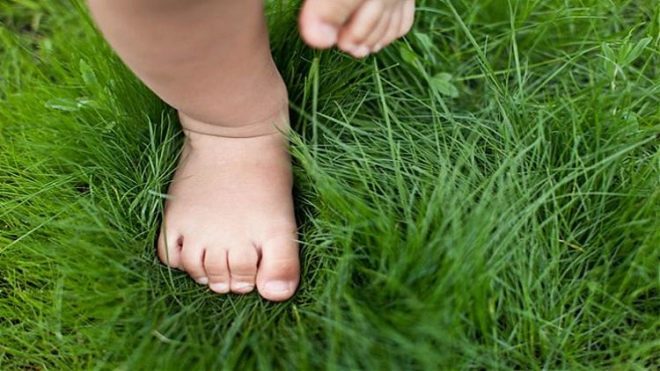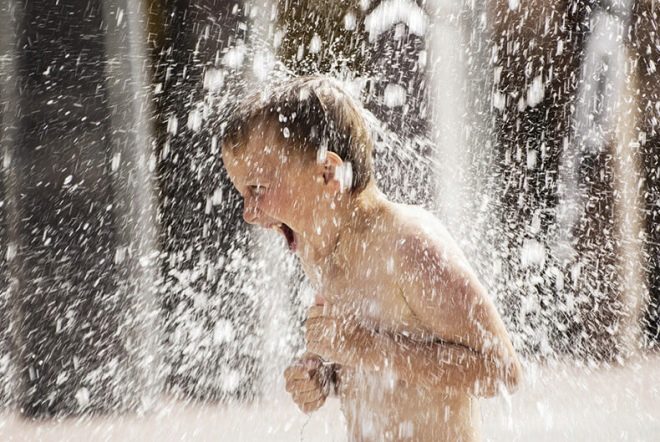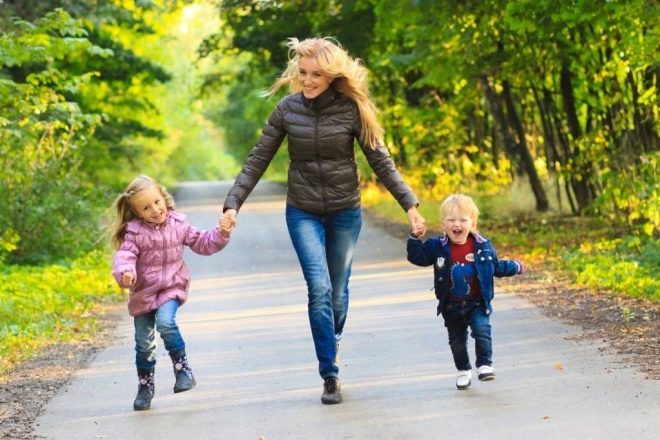How to start hardening a child and what principles to follow?
Recently, more and more parents are thinking about hardening children. The state of health of children in general, according to pediatricians, leaves much to be desired. A child is affected by a lot of negative factors - bad ecology, computerization of everything in the world, general decrease in mobility and activity.
In such conditions, physiotherapy-proven methods, including hardening, help to take care of the child's immunity.
About the system
Hardening does not apply to methods of treatment, and therefore it does not cure any chronic diseases.
Hardening of children is a method of physiotherapy, which helps to strengthen the immune system of the child and thereby try to prevent the frequent incidence.
Hardening children implies contact of the child with various natural factors: water, air, sunlight, different temperatures, atmospheric pressure. All this gradually increases the body's ability to withstand a variety of negative factors without compromising human health.
It can be said that the hardening system was not invented by people, but by nature itself, because once such contact with the natural environment was a completely everyday way of life for humanity. We walked barefoot, washed with cold water, were not afraid of the sun and wind.
Attempts to bring modern life closer to the natural, stipulated nature help to maintain the enormous innate potential for adaptation.
Many parents are interested, but on what, in fact, is the hardening method based, that it is able to give a beloved child? The fact is that air, water, temperature changes affecting the human body, cause a multistage complex of body responses. It involves not so much specific organs (liver or heart), but whole systems - musculoskeletal, nervous, circulatory, etc.
The organism is mobilized and by all means tries to maintain internal conditions at a stable level. This mobilization is an excellent training for immunity and the whole organism.
Gradually, the child becomes more adapted to the world in which he has come. The state of health is improved at the cellular, biochemical level. As a result, the incidence decreases, the tone and state of health increase.
Hardening is a physiotherapeutic method available at home for children of any age. It is possible to carry out such procedures both for infants, for newborns, for young children, and for schoolchildren.
Occupations will be useful for adults too, especially since it is difficult to imagine that only a child will be hardened. Usually this is the way of life of the whole family.
There are, of course, techniques that are not suitable for children, for example, winter swimming, but with prolonged preliminary training, as practice shows, it can be applied.
The quenching system does not tolerate irregularity, irresponsibility. Hardening the child should be gradually, and, as soon as the beginning took place, do not stop classes. With long breaks, all that has been achieved is gone, the effect of hardening, alas, is lost.
The first thing that parents who decide to temper the child must do is to show it to the pediatrician, since different methods have their own contraindications, which will be discussed below.
A bit of history
Doctors of antiquity guessed about the beneficial effects of natural forces on the human body. Widespread pouring water of different temperatures received in Greece and ancient Rome. The methods of educating boys in Sparta, for example, were based on extreme hardening, because society believed that it was the only way to grow strong warriors: the boys were shaved bald, went barefoot in any bad weather, and in the summer they also bare, washed with cold water.
From the age of one year, the boys were taught to run, throwing a spear, a disk, from two years to fighting, and at 12 they were given a raincoat and a bandage for the genitals, and in such clothes the Spartans went all year round, not having the right to warm themselves, even if it was very cold.
Staying under the sun was actively practiced by the ancient Egyptians. They perpetuated this method of treatment in drawings on the walls of temples that have survived to our days.
In China, in antiquity to this day, hardening is a measure of national scale.. The Chinese believe that hardening cures those diseases that are not yet.
In Russia, they also tried to raise their children hardy and strong, and therefore from birth they carried them to the bathhouse and steamed them out into the snow.
In the USSR, hardening was erected into the system of state prophylaxis, it was used in kindergartens and schools, in manufacturing. After the collapse of the USSR, national prevention was a thing of the past and became a personal matter. Each parent decides whether to harden the child or not.
In recent years, there has been a tendency to restore the overall hardening system, in any case, separate groups have already appeared in kindergartens in which they practice barefoot or dousing with water, naturally, with the consent of their parents.
Benefits for children
Everyone has heard about the benefits of hardening, but, unfortunately, parents have very little reliable information and knowledge in this matter. So, it is believed that hardening increases immunity, but this is only the tip of the iceberg.
Hardening improves the condition of the blood vessels, which reduces the likelihood of developing cardiovascular diseases, strengthens the local skin immunity, and increases the efficiency of lymphoid tissue, which reduces the likelihood of infection of SARS, influenza.
Do not think that seasoned children do not get sick. They can get sick, but their diseases are much easier. Due to the higher adaptation potential, such children recover faster after the operations performed.
Hardening improves sleep, digestion, the nervous system. Hardened children almost never suffer from obesity, allergic reactions, enuresis.
Hardening in infants of the first year of life provides an opportunity to quickly master motor and speech skills; this is one of the forms of preventing colds, which are considered the most dangerous for an infant.
A hardened child is easier to adapt and psychologically, for example, at 3 years old - to attend kindergarten, at 6-7 years old - to start schooling. In adolescents who have been tempered since childhood, the puberty period is easier.
Rules and principles
There are many methods of hardening for health promotion, methods of carrying out procedures also differ from each other. Principles remain permanent. And it is important to know them even before the parents begin to harden their small children.
Examination by a pediatrician
It is necessary to begin by identifying the true state of health, the starting point and identifying contraindications. A pediatrician will help in this. For example, children with allergies to UV rays are contraindicated sunbathing, and in cold forms of allergy the child does not become a member of the walrus squad. The presence of nevi, pathological moles - a contraindication to sun exposure, but water procedures are not contraindicated. Pathologies of the kidneys, heart, central nervous system require a separate scheme, which will make the doctor for a particular small patient.
Consultation with a doctor is also needed for parents, this conversation will help them better understand the purpose and methods of hardening, rules and safety techniques.
Graduation
Any new effect on the child's body should be started gradually - with a small amount of time exposure, gradually increasing the time of exposure. Cold or heat on the unprepared body can have a shocking effect. Therefore temperatures decrease and increase gradually, the procedure time increases gradually. And in general “gradually” is the main word in the hardening system.
In any method and method, the genitals of the child should be protected. The only exceptions are air baths in the warm season for babies.
Consistency
The system is important. Therefore, starting classes is one thing, and making them a habit is another. Keep tempering time every day.
Occupations and procedures can be canceled only when the child is sick with high fever. - it requires bed rest and the absence of stress factors for the body. But as soon as the temperature drops to 37.0 degrees and the child starts to rise, you can return to the tempering procedures.
It is important to know that after a break, even if it is insignificant in time, temperatures should again be reduced and the procedure time should be increased gradually and gradually.
Choose a method
The first step is to choose a hardening method and method. The existing classification divides the methods of traditional and non-traditional. It is necessary to take into account the pros and cons of each method for children of a certain age and taking into account the state of health of a particular baby.
Babies
Hardening can begin within a month after the birth of a child.
In the first weeks after birth, the child’s adaptive abilities are already extremely tense: after existing in the womb, it enters a new habitat. Additionally, the load is not worth the baby. Only air baths are allowed., which, besides fortifying action, will be an excellent prevention of baby diaper rash, diaper dermatitis.
Air baths start from 2 minutes and gradually bring to 10-15 minutes before each feeding.
The child must be completely stripped, free from diapers, cap and diaper.
Make sure that the conditions in the room are correct: air temperature - from 19 to 21 degrees, not higher, and air humidity - 50-70%. Avoid drafts.
In the month of the child can begin to strip water at room temperature after the air bath. After a couple of weeks of rubdowns, you can proceed to cool baths according to the method of Dr. Komarovsky - reducing the water temperature for evening bathing by half a degree every day until the temperature reaches 25 degrees.
Contrast shower should be used for infants only from 5-6 months, provided that before he had already “met” with cool baths. If not, then it is better to start with the legs paying off with cool water, gradually lowering its temperature: the vessels of the feet tend to narrow and this will not lead to a general loss of body heat. Gradually begin to pay off and legs, and pens.
Preschoolers
Among traditional methods for preschool children, it is possible to note gradually training the child first to cool and then to cold.
Nontraditional methods, for example, It is advisable to use a douche with repeated changes in water temperature only for children who have already adapted to the traditional hardening.. It should be understood that in preschool age it is important to combine methods hardening with exercise - then the results will be faster and more noticeable.
Air baths in a complex with physical activity are mobile or sports games in the open air in the warm season, outdoor gymnastics.
Water procedures for a preschooler should include swimming in open water in the summer. Useful walking barefoot. If there is an opportunity, you need to encourage him on the street in the summer, let the child walk barefoot in the village, in the country, it will help not only strengthen the immune system, but also be a good prevention of flatfoot.
For preschool children in kindergartens often organize hardening groups. If it is in your facility, it is worth writing a child into it. Classes are held there under the supervision of a medical professional who is at any time ready to advise parents on all matters relating to hardening at home and in kindergarten.
Especially useful to visit such a group will be for frequently ill children.
Water hardening - what you need to know?
This is one of the most effective and efficient methods, which refers to the traditional. However, you need to understand that the inept approach can harm the child. There are several ways to use water: washing and bathing, bathing in a shower, bath, and dousing with cold water.
If the child did not harden earlier, start with washing, with immersing the hands in cool water, and gradually proceed to rubbing and dousing.
Proper hardening with water implies a gradual decrease in temperature.
- Start with water at 35 degrees and lower by 1-2 degrees per day until the child begins to calmly perceive water at 16 degrees.
- For infants, the reduction mode is smoother - half a degree per day, and the final temperature is limited to 23 degrees.
Washing should include not only the contact of water with the face, but also pouring over the neck, hands to the elbows, upper chest.
- If it is summer outside, you can immediately carry out this washing with tap water (the desired temperature is about 20 degrees).
- If the yard is winter, you should not expose the body to strong stress, start washing the child with warm water (about 30 degrees) and gradually reduce the temperature to 17 degrees. A child must wash at least 4 minutes.
If you decide to start with drenching the legs, remember that the time of exposure to temperature on the feet and lower legs should not exceed 15 seconds at the very beginning and reach a minute, and after pouring it on the child, you should rub your legs with a hard towel to stimulate the work of blood vessels and biologically active points of the foot.
Rubbing is considered a more effective method than washing.. On sale there are special terry bath mittens. That is what you need.
Wet it in cool water and start picking up the hands of the child in the direction from below (from the fingers) up (up to the shoulder). After the hands, wipe the neck and chest, back and abdomen with similar massage movements. Do the procedure vigorously to have time to wipe the entire child in a maximum of 2 minutes. Then with a towel wipe the wet skin to a small redness.
Douche with cold or cool water spend after normal bathing.
Do not forget that after dousing you should also rub the child with a dry hard towel.
Contraindications for water hardening is not so much:
- cold allergy;
- high body temperature;
- some diseases of the genitourinary system in the acute stage;
- mental illness in which cold douche can cause a panic attack, aggression or hysterical attack in a child.
Air and sun
Air baths will be more effective if combined with exposure to UV rays. Thus, walking without a shirt and barefoot in the apartment is useful, but a similar walk in the sun is doubly useful.
With sunlight, a child receives the vitamin D necessary for his body, the lack of which leads to rickets and other health problems. But this method of hardening requires strict control by adults: an excess of sunlight can adversely affect the condition of the baby.
If the child is not yet a year old, it is not necessary to put him in a stroller naked in the sun. For such babies, being in direct sunlight is contraindicated. They better get their portion of the ultraviolet in the shade.
Children older than a year should be released into the sun during periods when solar activity is not so aggressive - in the morning before 11.00 and after lunch from 16.00. Immediately naked in the sun, the child is not released. First, he should walk in lightweight clothes, then within a week, the mother should decrease the number of items of clothing to nudity (naturally, you can walk in the territory of a private household or in the country).
The time of sunbathing under the open rays for children under five should not exceed 15 minutes per day, for children under 7 years old - 25 minutes, for schoolchildren - 30 minutes.
Very effective combination of solar and water treatments.
During sunbathing, we must not forget that the child should not be thirsty - take care of the presence of a bottle of drinking water. Do not forget to grab panama or kerchief for the head.
Sun baths are contraindicated:
- children with melanoma;
- giant and large nevi;
- pathological moles (irregular, large, prone to increase).
It is also undesirable to sunbathe children with photoallergy (allergic to UV rays).
The time of sunbathing for children with fair skin, blond hair should be less than for dark children, as they can get sunburn faster.
Some unconventional methods
Parents can independently practice non-traditional methods of hardening, but first it is worth asking the opinions of a specialist - a pediatrician or a physiotherapist.
Hardening the feet when walking barefoot
Such methods include hardening of the feet by the method of walking barefoot (some children walk barefoot even in the snow, which is suitable only for well-trained ones).
Start walking barefoot with a house or apartment - remove woolen socks from a child, get rid of slippers.
First, the child must learn to walk in light socks for 4-5 minutes a day.. Every day, add a minute and gradually get rid of socks in general.
In the summer, teach your child to walk barefoot on the sand, on the ground, on the grass. With diligence and constant training, you can gradually come up and walk barefoot in the snow.
Hardening throat
Hardening of the throat is carried out using a very tasty and pleasant method - eating ice cream. This quenching will appeal to both adults and children.
Rubbing snow and walking on it
In the winter, some practice rubbing with snow and walking in the snow. This method is not suitable for children with chronic respiratory diseases and a cold form of allergy. The rest can try.
At first, parents remove one shoe from their children and put their feet in the snow for only 5-10 seconds. Then such actions are done with the second leg. Then you can put two legs on the snow.
The time of running or walking in the snow at the very beginning should not exceed 30 seconds, gradually increase it and bring up to 7-10 minutes.
Opinion of Dr. Komarovsky
The famous pediatrician Yevgeny Komarovsky claims that a newborn child does not need hardening, because nature has already created him as close as possible to nature. The task of parents is to simply maintain conditions that will help the child to maintain the ability to adapt - not to muffle, not overfeed, to give the opportunity to contact with the wind, sun, water.
For children of a different age and their parents, the doctor gives several important tips, which can also be considered recommendations for hardening:
- walk more often (to school, from kindergarten, etc.);
- make sure that the baby’s clothes are comfortable, so that they don’t sweat or overheat;
- food must meet the energy costs (do not overfeed the child).
Only a general change in the lifestyle of the whole family will bring results.
From dousing for 5 minutes a day, when the child spends the rest of the time with the tablet or at the TV with a plate of chips, there will be no benefit.And no memo according to the rules of hardening will help a child to become healthier, only a general change in lifestyle, says Komarovsky - the best way and method of recovery of the offspring.
Dr. Komarovsky will tell you about how to start hardening a child in the next video.


